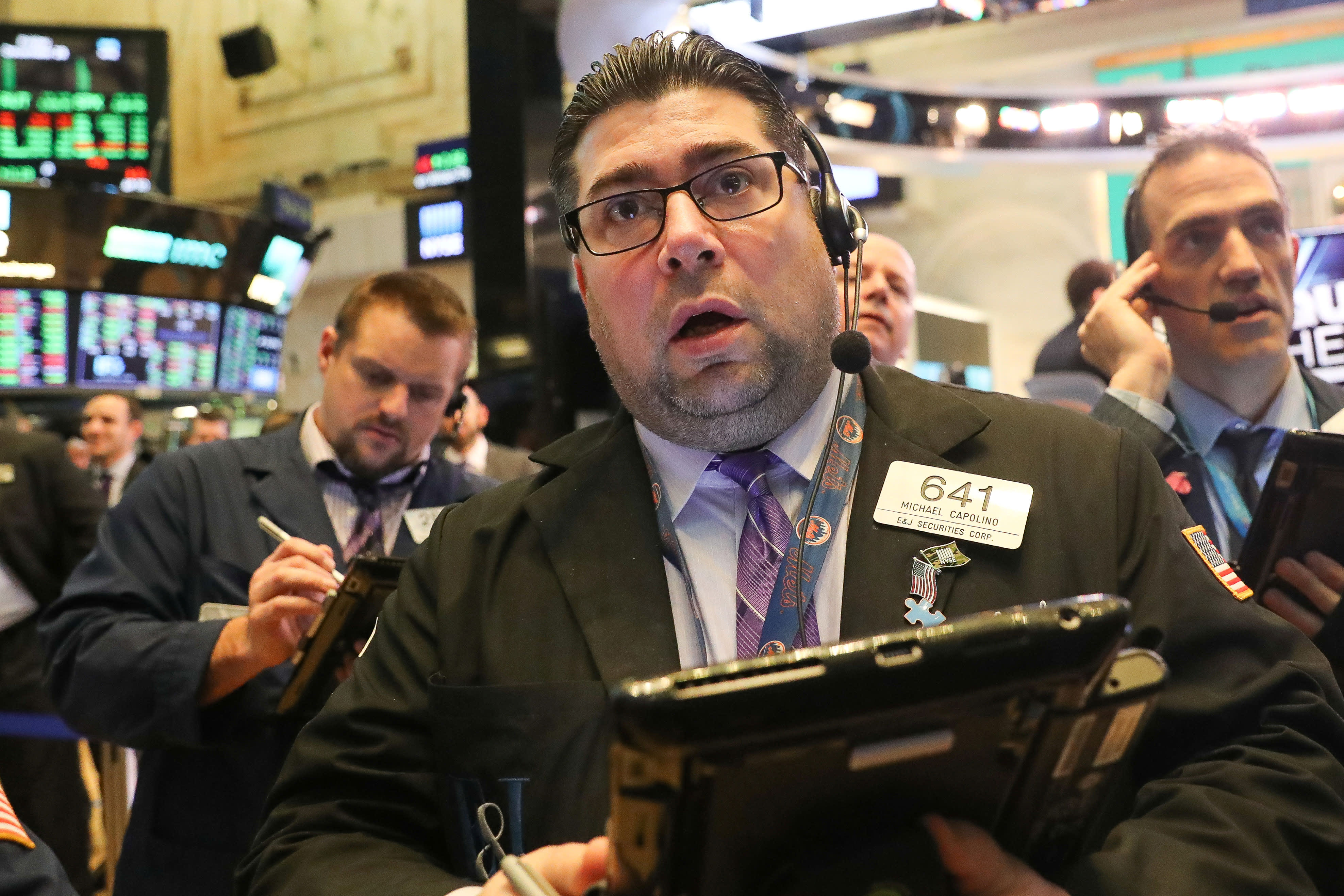Traders work on the floor of the New York Stock Exchange.
Jeenah Moon | Reuters
It’s too soon to rush back into stocks after the market suffered its worst week since the financial crisis amid coronavirus concerns, strategists at major U.S. banks warned.
The Dow Jones Industrial Average, S&P 500 and Nasdaq Composite all fell more than 10% last week, their biggest weekly declines since October 2008. The Dow also had its largest one-day point decline on record last week. Those losses sent the major averages into a correction, down more than 10% from all-time highs set earlier in February.
The sharp move down was sparked by a growing number of coronavirus cases outside of China, fueling concerns over sharp downturn in global economic activity. The decline’s swift nature also prompted some calls for a capitulation rebound. However, strategists at JPMorgan, Citi and Goldman Sachs think there hasn’t been enough pain in the market yet for such a bounce to occur.
“While ‘buy the dip’ has been a successful strategy since the Global Financial Crisis, with equity drawdowns often reversing quickly, it might be more risky this time,” Christian Mueller-Glissmann, equity strategist at Goldman Sachs, said in a note. “With global growth still weak, the shock from the coronavirus outbreak lingering and less scope for monetary and fiscal easing, the risk of a more prolonged drawdown remains.”
More than 85,000 coronavirus cases have been confirmed worldwide along with at least 2,943 deaths related to the virus. Iran has confirmed 978 cases along with 54 deaths. Australia, Thailand and the U.S. reported over the weekend their first coronavirus-related deaths. Rhode Island was the first U.S. state in the east coast to report a coronavirus case.
In England, the number of coronavirus cases has risen to 35 after 12 new cases were confirmed Sunday morning. The number of cases in Italy, meanwhile, has jumped to 1,128 while the number of coronavirus cases in South Korea now totals more than 3,700.
The rapidly rising number of cases around the world led investors in the U.S. to dump their equity holdings and load up on traditionally safer U.S. Treasurys. The benchmark 10-year yield fell to a record low last week, breaking below 1.15% first time. The rate started last week trading above 1.4%. The 30-year bond rate also traded at an all-time low. Yields move inversely to prices.
But while the drop in stock prices and bond yields was sharp fast, there still aren’t many signs of outright capitulation in the market after last week’s sell-off, JPMorgan’s Nikolaos Panigirtzoglou said in a note.
“While de-risking by momentum traders such as CTAs looks very advanced, with the S&P 500 only 3%-4% away from approaching the negative momentum extremity of December 2018, we find less degree of capitulation in other position metrics,” the strategist said. Panigirtzoglou examined how commodity trading advisors are positioned and the positions taken by asset managers and leveraged funds on U.S. stock futures, among other factors. “Looking at a range of indicators, we do not yet find the same degree of capitulation as in December 2018.”
Tobias Levkovich, chief U.S. equity strategist at Citi, echoed Panigirtzoglou comments, noting: “The S&P 500’s drop has improved the risk/reward ratio but we need to see panic readings before stepping up.”
Subscribe to CNBC PRO for exclusive insights and analysis, and live business day programming from around the world.
